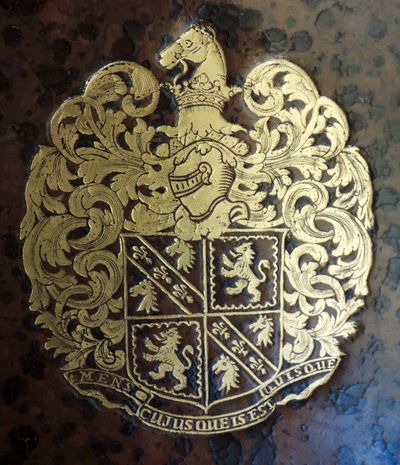Samuel Pepys 1633-1703
Samuel PEPYS 1633-1703
Biographical Note
Born in London, son of John Pepys, tailor. BA Magdalene College, Cambridge 1654, MA 1660. Began a career in public administration in London in the mid 1650s, with the patronage of his relative Edward Montagu, later Earl of Sandwich. He was appointed clerk of the Navy Board in 1660 and advanced through a series of posts to become Secretary to the Admiralty Commission in 1673. Fellow of the the Royal Society 1665 (President 1684-86), MP for Castle Rising, Norfolk 1673; Master of Trinity House 1676. As Secretary to the Admiralty he achieved various reforms but he was a casualty of political turmoil in the late 1670s and was out of office for several years; he was reappointed in 1684. He was in charge of naval administration throughout the reign of James II and left office finally in 1690.
Pepys’ historical significance is greatly enhanced by the diary he kept 1660-69, with its detailed chronicle of events at both a personal and a national level, candidly recorded; it was first published in 1825. He had a wide circle of acquaintance with scientists and scholars of his generation.
Books
Pepys’s library, of ca.3000 volumes surviving entire in their original bookcases, is one of the best known and commonly cited examples of a 17th-century personal library. He began buying books during his Cambridge years and continued throughout his life. His diary contains over 500 references to the purchase, binding, reading and other use of books and gives extensive insight not only the way the collection was put together, but also to his motivation and priorities.
Pepys was genuinely interested in the contents of his books, which he is known to have read; he was also a bibliophile, concerned about visual presentation and “the neatness of everything” (as confessed in his diary in 1663). He had his books well, and sometimes expensively, bound, and had many books rebound to create a uniform look; wooden stands were made for books to stand on, so as to achieve evenness of heights. Most of his purchasing and binding work was effected through various members of the London book trade. He had two glass-fronted bookcases made in 1666 and gradually added more, to the same design, until there were 12 by the time of his death. A drawing of ca.1693 shows the arrangement of these cases in a room of his London home.
In a note of 1695, Pepys stated that he intended his collection to be different from the “extensive, pompous and stationary libraries of princes, universities, colleges and other public societies” as it was “calculated for the self-entertainment only of a solitary, unconfined enquirer into books”. He wished to have “in fewest books and the least room the greatest diversity of subjects, styles and languages its owner’s reading would bear”. True to this aim, the library is wide-ranging in content, with noted strengths in literature, science, geography, travel, history, and politics; it also has important holdings of music (a particular love of Pepys), and maritime affairs. Pepys also had ca.1100 maps and charts, and had 129 manuscripts listed in Bernard’s 1697 Catalogi manuscriptorum, including a number of medieval ones.
During the 1690s Pepys enlisted the help of his nephew, John Jackson, to organise the library. The arrangements to be made after his death were directed through a series of codicils to his will; Jackson was to have a lifetime interest, after which the collection was to be given, entire, to a Cambridge college (either Trinity or Magdalene; the latter was preferred, and the books and their cases were transferred there in 1724). He left instructions that each book should have an armorial stamp added, and that books should not be added or taken away, beyond such selective additions as Jackson should make (Pepys had a particular wish to bring the collection up to exactly 3000 volumes). Apart from 70 volumes of manuscripts which were separated from the collection during Pepys’ lifetime, and which are now in the Bodleian Library (via Richard Rawlinson), the library has been kept as Pepys desired at Magdalene College since 1724 and has been extensively studied and catalogued.
Characteristic Markings
In accordance with the will, Pepys’s books were marked with the addition of bookplates (a portrait at the front, a cipher plate at the end) and an armorial stamp on the boards.
Sources
- British Armorial Bindings.
- Cunich, P. et al, History of Magdalene College, Cambridge 1428-1988, 1994.
- Gambier Howe, E. R. J. Franks bequest: catalogue of British and American book plates bequeathed to the ... British Museum. London, 1903, 23258-60.
- Knighton, C. S. "Pepys, Samuel (1633–1703), naval official and diarist." Oxford Dictionary of National Biography.
- Latham, R. (gen. ed), Catalogue of the Pepys Library, 6v, 1978-85.
- Lee, B. N. British bookplates: a pictorial history. Newton Abbot, 1979. 11-12;
- Loveman, K. Books and sociability: the case of Samuel Pepys's library, Review of English Studies 61 (2010), 214-233.
- Loveman, K. Samuel Pepys and his books, 2015.
- Rosenblum, J. ‘Samuel Pepys’ in W. Baker (ed), Pre-19th century British book collectors, 1999, 258-73.
- Samuel Pepys in Material Evidence in Incunabula.
- Samuel Pepys, Catalogue of English literary manuscripts 1450-1700.
